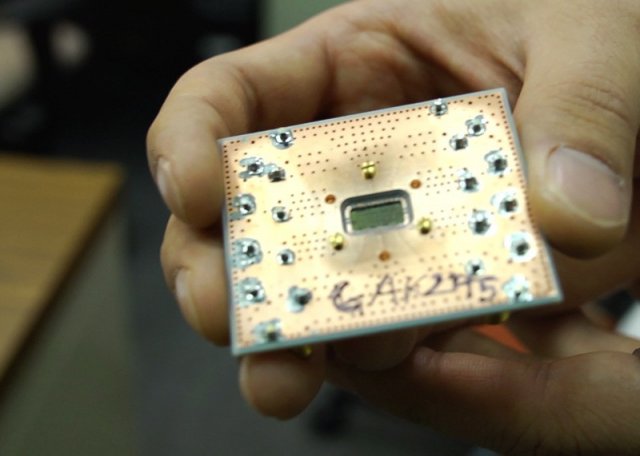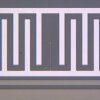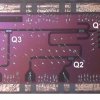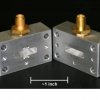IBM: We're on the cusp of the Quantum Computing revolution (5 pics + 3 video)
IBM Research Advances Device Performance for Quantum Computing
Latest results bring device performance near the minimum requirements for implementation of a practical quantum computer.
Scaling up to hundreds or thousands of quantum bits becomes a possibility.
YORKTOWN HEIGHTS, NY – 28 Feb 2012: Scientists at IBM Research (NYSE: IBM)/ (#ibmresearch) have achieved major advances in quantum computing device performance that will accelerate the realization of a practical, full-scale quantum computer. For specific applications, quantum computing which leverages the underlying quantum mechanical behavior of matter has the potential to deliver computational power that is unrivaled by any supercomputer today.
Using a variety of techniques in the IBM labs, scientists have established three new records for reducing the error in elementary computations and retaining the integrity of quantum mechanical properties in quantum bits (qubits) – the basic units that carry information within quantum computing. Furthermore, IBM has chosen to employ superconducting qubits which use established microfabrication techniques developed for silicon technology, providing the potential to one day scale up to and manufacture thousands or millions of qubits.
IBM researchers will be presenting their latest results today at the annual American Physical Society meeting taking place February 27-March 1, 2012 in Boston, MA.
The Possibilities of Quantum Computing
The special properties of qubits allow a quantum computer to work on millions of computations at once, while a desktop PC can typically handle minimal computations at a time. For example, a single 250-qubit state contains more bits of information than there are particles in the universe.
These properties will have wide-spread implications foremost for the field of data encryption where quantum computers could factor very large numbers like those used to decode and encode sensitive information.
"The quantum computing work we are doing shows it is no longer just a brute force physics experiment. It's time to start creating systems based on this science that will take computing to a whole new level," says IBM scientist Matthias Steffen, manager of the IBM Research team that's focused on developing quantum computing systems to a point where it can be applied to real-world problems.
Numerous other applications could include searching databases of unstructured information, performing a range of optimization tasks and solving new interesting mathematical problems.
How Quantum Computing Works
The most basic piece of information that a classical computer understands is a bit. Much like a light that can be switched on or off, a bit can have only one of two values: "1" or "0". For qubits, they can hold a value of "1" or "0" as well as both values at the same time. Described as superposition, this is what allows quantum computers to perform millions of calculations at once.
One of the great challenges for scientists seeking to harness the power of quantum computing is controlling or removing quantum decoherence – the creation of errors in calculations caused by interference from factors such as heat, electromagnetic radiation, and materials defects. To deal with this problem, scientists have been experimenting for years to discover ways of reducing the number of errors and of lengthening the time periods over which the qubits retain their quantum mechanical properties. When this time is sufficiently long, error correction schemes become effective making it possible to perform long and complex calculations.
There are many viable systems that can potentially lead to a functional quantum computer. IBM is focusing on using superconducting qubits that will allow a more facile transition to scale up and manufacturing.
IBM has recently been experimenting with a unique "three dimensional" superconducting qubit (3D qubit), an approach that was initiated at Yale University. Among the results, the IBM team has used a 3D qubit [technical paper available] to extend the amount of time that the qubits retain their quantum states up to 100 microseconds. This value reaches just past the minimum threshold to enable effective error correction schemes and suggests that scientists can begin to focus on broader engineering aspects for scalability.
In separate experiments, the group at IBM also demonstrated a more traditional "two-dimensional" qubit (2D qubit) device and implemented a two-qubit logic operation – a controlled-NOT (CNOT) operation [technical paper available], which is a fundamental building block of a larger quantum computing system. Their operation showed a 95 percent success rate, enabled in part due to the long coherence time of nearly 10 microseconds. These numbers are on the cusp of effective error correction schemes and greatly facilitate future multi-qubit experiments.
IBM and Quantum Computing Leadership
The implementation of a practical quantum computer poses tremendous scientific and technological challenges, but all results taken together paint a very favorable picture for realizing the first practical quantum computer in the not too distant future.
Core device technology and performance metrics at IBM have undergone a series of amazing advancements by a factor of 100 to 1,000 times since the middle of 2009, culminating in the recent results that are very close to the minimum requirements for a full-scale quantum computing system as determined by the world-wide research community. In these advances, IBM stresses the importance and value of the ongoing exchange of information and learning with the quantum computing research community as well as direct university and industrial collaborations.
"The superconducting qubit research led by the IBM team has been progressing in a much focused way on the road to a reliable, scalable quantum computer. The device performance that they have now reported brings them nearly to the tipping point; we can now see the building blocks that will be used to prove that error correction can be effective, and that reliable logical qubits can be realized," observes David DiVincenzo, professor at the Institute of Quantum Information, Forschungszentrum Juelich.
Based on this progress, optimism about superconducting qubits and the possibilities for a future quantum computer are rapidly growing. While most of the work in the field to date has focused on improvements in device performance, efforts in the community now must now include systems integration aspects, such as assessing the classical information processing demands for error correction, I/O issues, feasibility, and costs with scaling.
IBM envisions a practical quantum computing system as including a classical system intimately connected to the quantum computing hardware. Expertise in communications and packaging technology will be essential at and beyond the level presently practiced in the development of today's most sophisticated digital computers.
Галерея: IBM: We're on the cusp of the Quantum Computing revolution (5 pics + 3 video)
Source: engadget










